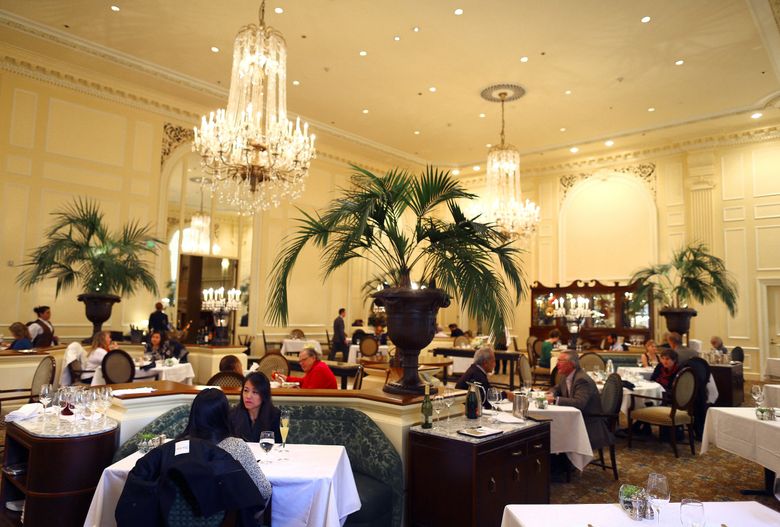Savor Genuine Asian Cuisine With a Pan-Asian Spin for a Cooking Adventure
Beginning on a cooking trip with authentic Oriental cuisine, boosted with a Pan-Asian spin, uses a distinct chance to discover the rich tapestry of tastes that specify the region's varied cooking traditions. As you ponder these luring meals, consider the cultural stories and historic influences that shape them, each bite providing a story waiting to be uncovered. best asian restaurant Islamabad.

Exploring Pan-Asian Tastes
In the realm of international gastronomy, Pan-Asian food stands out for its exceptional diversity and the harmonious interaction of tastes from different Eastern cultures. This culinary technique celebrates the unique ingredients and rich traditions discovered across the continent, producing a tapestry of preferences that is both satisfying and fascinating. Key to Pan-Asian food is its capability to balance different flavors-- sweet, salty, spicy, and sour-- while highlighting the freshness and quality of each ingredient.
From the umami-rich soy sauce of Japan to the intense chili peppers of Thailand, Pan-Asian cuisine supplies a considerable combination of flavors. These components are usually incorporated in innovative methods, boosting meals with layers of intricacy. For example, making use of great smelling herbs such as lemongrass and cilantro, common in Vietnamese and Thai cuisine, includes a refreshing illumination to meals, while the incorporation of coconut milk delivers a luscious, abundant structure.
The emphasis on fresh fruit and vegetables and aromatic seasonings makes certain that each meal is not only a feast for the taste however additionally for the detects. Pan-Asian food welcomes restaurants to start a culinary journey, discovering the substantial and differed landscapes of Oriental gastronomy with every bite.
Combination Dishes to Try
While Pan-Asian cuisine is celebrated for its standard flavors, the contemporary cooking landscape is progressively welcoming blend dishes that blend these timeless aspects with influences from various other areas. This ingenious technique not just honors the abundant heritage of Asian culinary arts yet also presents unique preference experiences that appeal to modern palates.
An archetype of such a combination recipe is the Korean-Mexican taco, where marinaded bulgogi beef is wrapped in a warm tortilla, topped with kimchi and a spicy gochujang-infused salsa. This combination weds the strong, full-flavored tastes of Korea with the lively, fresh components of Mexican food. In a similar way, sushi burritos have gotten popularity, joining together the fragile virtuosity of Japanese sushi with the hearty, hand-held ease of a burrito, frequently featuring blend active ingredients like tempura shrimp and avocado with a drizzle of wasabi mayo.
Another significant recipe is Thai curry ramen, which infuses the luscious, aromatic seasonings of Thai curry right into the comforting broth of standard Japanese ramen, creating a harmonious mix that entices the detects. These fusion dishes expand past simple novelty; they represent a cooking dialogue in between cultures, urging exploration and technology in the globe of Pan-Asian food.
Necessary Components and Seasonings
To truly appreciate Pan-Asian cuisine, one have to comprehend the crucial ingredients and spices that develop its structure. This varied culinary style draws from an abundant tapestry of Eastern traditions, using an unified mix of structures and pizza hut specials flavors.
Aromatic components are pivotal, with ginger, garlic, and lemongrass being common across numerous Pan-Asian dishes. These components provide a great smelling base that improves the complexity of tastes. Flavors such as celebrity anise, cardamom, and cinnamon present warmth and character, echoing impacts from areas like China and India.

Cooking Strategies and Tips
Understanding the art of Pan-Asian food calls for experience with its unique food preparation techniques, each adding to the lively tapestry of flavors this cooking custom is celebrated for. Central to these approaches is the stir-fry, a rapid food preparation method that maintains the dietary integrity and dazzling colors of components. Using a wok, the stir-fry technique enables also warmth distribution, crucial for achieving the particular appearance and flavor equilibrium of Pan-Asian dishes.
An additional fundamental technique is steaming, specifically prevalent in Chinese cuisine. This gentle approach preserves the all-natural flavors and nutrients of active ingredients, making it ideal for fish and shellfish and veggies. Dumplings, a precious staple, usually take advantage of steaming, causing soft, succulent structures.
Barbecuing, additionally indispensable, presents great smoky midsts to Find Out More meals such as Korean bulgogi or Japanese yakitori (Best ambiance restaurants Islamabad). This strategy frequently entails marinating active ingredients, enabling flavors to penetrate deeply prior to cooking over an open fire or warmer
Last but not least, understanding the art of stabilizing tastes-- wonderful, sour, salted, bitter, and umami-- is essential. Effectively layering these components can elevate a meal from average to extraordinary, supplying a complex and satisfying cooking experience that embodies the essence of Pan-Asian cuisine.
Dining Experiences Worldwide
Around the world, Pan-Asian cuisine provides an exceptional dining experience, celebrated for its rich tapestry of tastes and dynamic presentations. This cooking sensation has transcended social borders, recording the hearts and tastes of food lovers worldwide. In worldwide cities like New York, London, and Sydney, Pan-Asian restaurants serve as fusions where culinary traditions from Thailand, Japan, China, and past converge, offering diners with a diverse mix of meals that highlight the region's variety.
The global appeal of Pan-Asian food exists in its capacity to use both authenticity and development. Chefs masterfully wed conventional ingredients such as lemongrass, soy sauce, and miso with contemporary strategies, causing dishes that are both familiar and refreshingly new. This fusion permits diners to start a cooking journey that respects heritage while accepting modernity.
Additionally, eating experiences are boosted via attentively designed environments that show the values of Pan-Asian aesthetics. From minimalist Japanese-inspired insides to vivid Thai-themed spaces, each dining establishment uses a distinct ambiance that enhances the culinary offerings. Because of this, clients are not merely eating a dish but partaking in a cultural experience, making Pan-Asian dining an absolutely international sensation.
Conclusion
The exploration of Pan-Asian cuisine uses an extensive understanding of the intricate interplay of tastes and culinary traditions throughout Asia. By embracing combination meals such as Thai curry ramen and sushi burritos, the cooking journey not only highlights the flexibility of standard ingredients but additionally showcases ingenious modern-day methods. This gastronomic journey, enhanced by cooking methods and important flavors, supplies a distinct possibility to appreciate the multiculturalism and culinary creativity that specify Pan-Asian food on a global range.
Getting started on a cooking trip via genuine Eastern cuisine, boosted with a Pan-Asian twist, provides a distinct chance to explore the abundant tapestry of tastes that specify the area's varied cooking practices.In the realm of worldwide gastronomy, Pan-Asian food stands out for its impressive diversity and the unified interplay of tastes from different Asian cultures. Key to Pan-Asian food is its capacity to balance different tastes-- sweet, salted, spicy, and sour-- while highlighting the freshness and top quality of each ingredient.
